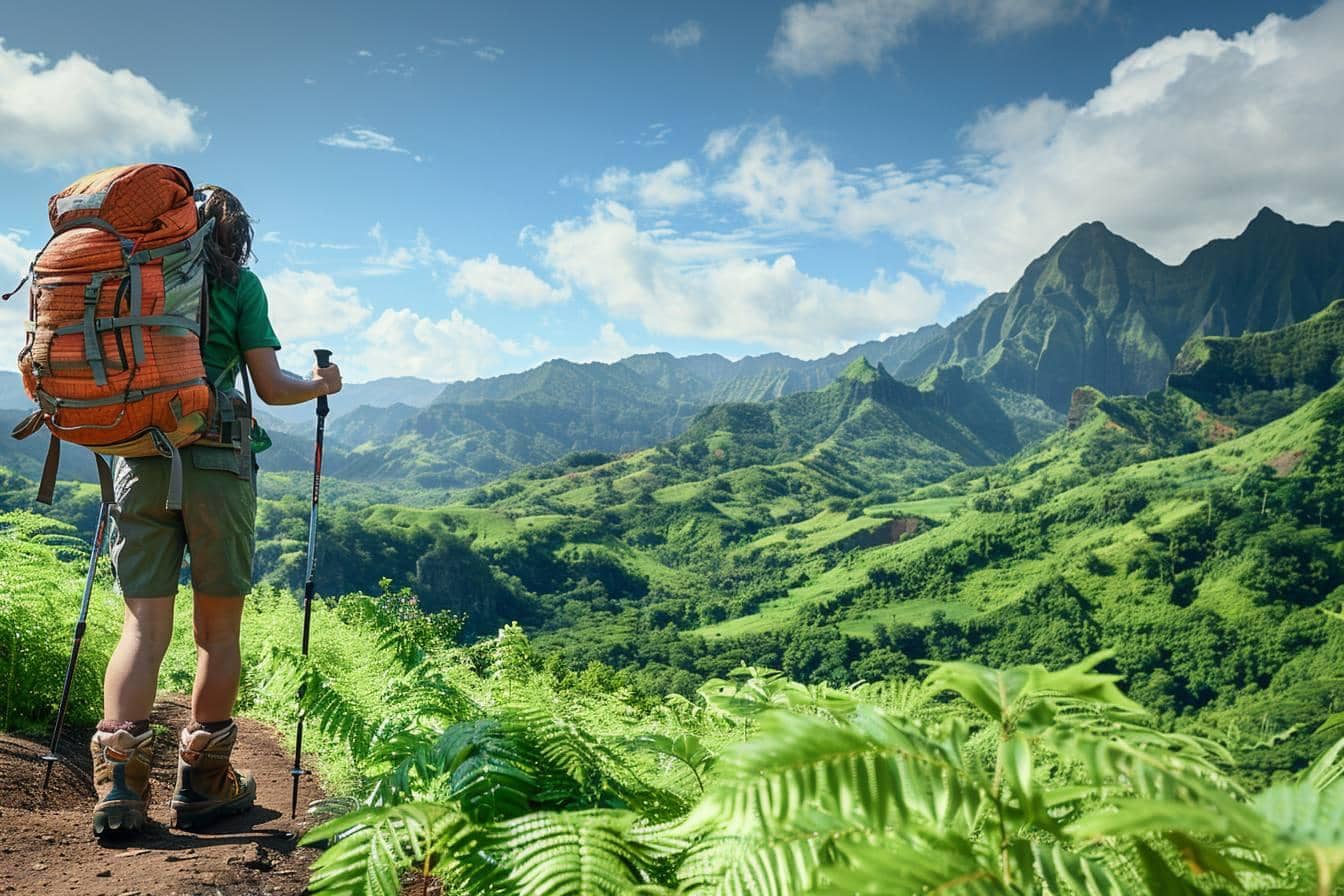When embarking on an adventure in Japan’s diverse landscapes, being prepared means having the right gear and understanding the nuances of the environment.
From the spring bloom to the winter snow, every season offers a unique hiking experience. However, adapting your preparation for nature’s unpredictability is crucial, from changing weather to wildlife encounters.
In this article
- Top things to know in winter
- From snow to mud: how to stay safe during springtime outings
- Being aware of wildlife encounters
- Key takeaways for a year-round hiking adventure in Japan
Top things to know in winter
Winter hiking in Japan presents a fairy-tale-like landscape but comes with its set of challenges. One of my most unforgettable trekking experiences was navigating the snow-covered trails of the Japanese Alps.
The need for meticulous preparation parallelled the breathtaking views. To navigate these icy terrains safely, one must prioritize having the right winter gear.
Proper clothing and footwear are pivotal.
Waterproof and insulated hiking boots must keep your feet dry and warm. Layers are essential, starting with a base layer that wicks away sweat, an insulating layer to retain heat, and a waterproof outer layer to fend off snow and rain. Don’t forget accessories like thermal gloves, a beanie, and UV-protective sunglasses to shield against the glaring snow.
Moreover, checking weather forecasts religiously becomes your routine.
The weather in high altitudes can shift dramatically, transforming a clear sky into a snowstorm within hours. Always have a flexible plan and be prepared to turn back if conditions worsen.
Another vital aspect is understanding avalanche risks.
Before my trek in the Alps, I familiarized myself with the terrain’s avalanche forecast and equipped myself with safety gear like a beacon, probe, and shovel. These preparedness measures are not optional but essential to safely navigate Japan’s winter mountains.
Lastly, being aware of wildlife encounters is crucial.
In my travels, I’ve learned the importance of researching which animals I might encounter and how to react safely. While Japan’s wildlife is less aggressive during winter, proper food storage and disposal are vital to avoid attracting animals to your campsite.
From snow to mud: how to stay safe during springtime outings
As the seasons change, the snow melts, and the landscapes transform. Hiking in spring offers a vibrant tapestry of blooming flora and introduces new challenges like slippery trails and unpredictable weather.
During my spring hike along the historical Nakasendo trail, the shift from winter to spring was evident, and so was the change in how I prepared.
Proper footwear remains essential. Waterproof boots with a solid grip are necessary to navigate the muddy trails. Gaiters can prevent mud from entering your boots, keeping your feet dry and comfortable.
Packing layers is still essential during spring due to the fluctuating temperatures. However, these layers often include lighter materials and rain gear for sudden showers.
The importance of checking the weather forecast escalates in spring. Storms can appear suddenly, and being caught unprepared can be hazardous. Always pack a waterproof jacket and plan your hike for the time of day when the weather is most stable.
Familiarizing oneself with the local flora and fauna is a fun yet critical preparation step. Spring blooms are not just beautiful but can also be misleading. Knowing which plants to avoid and which animals might be emerging from hibernation adds to the experience while ensuring safety.

Being aware of wildlife encounters
Japan’s diverse wildlife includes majestic Japanese macaques and elusive Tanuki, each with unique behaviors. While hiking in Shiretoko National Park, known for its brown bears, I learned the significance of wildlife awareness the hard way.
Carrying bear spray and making noise while trekking can deter unexpected encounters, showcasing the importance of preparation and respect for nature’s inhabitants.
Understanding wildlife behavior and taking precautions, such as hanging food in trees or using bear-proof containers, can prevent attracting animals to your camp. Keeping a safe distance and never feeding wild animals is also critical. These practices ensure both your safety and the well-being of the wildlife.
Leave-no-trace principles are not just ethical practices but essential ones. Staying on trails, packing out all trash, and being mindful of the environment contribute to preserving these natural habitats.
Preparing for wildlife encounters is about preventing risk and enhancing the hiking experience. Learning about the animals you might see adds an exciting layer to your adventure, turning a simple hike into a journey of discovery.
Key takeaways for a year-round hiking adventure in Japan
Exploring Japan’s outdoors, with its seasonal beauty and varied terrains, from snow-capped mountains to lush forests, is an unparalleled experience. Each season, with its beauty and challenges, requires a unique approach to safety and preparation.
As a solo traveler and a tech geek, I’ve learned the importance of blending respect for nature with the intelligent use of technology. Whether utilizing GPS for trail navigation, sourcing the latest weather updates, or using wildlife encounter apps, technology can be a hiker’s ally.
Preparation is paramount, from choosing the right gear for the season to understanding each period’s dangers.
Adapting to the seasonal demands, respecting wildlife, and leaving no trace are non-negotiable principles that ensure a safe and enjoyable outdoor experience. Japan offers a treasure trove of hiking adventures that, with the proper preparation, can be both exhilarating and safe for everyone.
Embracing the journey, with all its unpredictability, is part of the adventure. The landscapes, the wildlife, and the changing seasons offer lessons in resilience and adaptability.
My travels have taught me that with preparation and respect for nature, the beauty of Japan’s outdoors can be safely enjoyed year-round, making every hike not just a journey through nature but a journey of growth.
So, lace up your boots, check the forecast, and step into Japan’s vast, breathtaking outdoors. With the proper preparation, a spirit of adventure, and respect for the natural world, the trails of Japan offer experiences that resonate long after the hike.




